Item description: Entry, dated 21 July 1861, from the diary of Charles Carroll Gray, an assistant surgeon in the 2nd Regiment of the United States Cavalry (Regular Army) 11th New York Infantry Regiment. This entry gives a lengthy description of Gray’s experiences at the First Battle of Bull Run (Manassas).
As the battle progressed, Gray was sent to serve in a temporary field hospital at Sudley Church. There, he and several other medical officers decided that Gray should remain with the wounded to become a prisoner of war (perhaps thinking that he could continue administering medical treatment during their imprisonment and that, due to his rank, he would later be paroled). Gray was not paroled. He was imprisoned in Confederate military prisons in Richmond, Charleston, Columbia, and Salisbury, after his capture at First Bull Run.
[Item transcription available below images.]
Item citation: from volume 1 of the Charles Carroll Gray Diary #2569-z, Southern Historical Collection, The Wilson Library, University of North Carolina at Chapel Hill.
Item transcription:
21st. Deluged by crossing columns of infantry; at day break halted on the hill at Centreville. Never felt so depressed in my life. Moved in close order over the fields & through the woods far to the right, a heavy cloud of infantry skirmishes on the left. As the sun rose I could not help thinking that many were looking at it for the last time. I said so the officer next me & he [“declined & fell”] into poetry to this effect – “And Ardennes moves above them her green leaves dewy with nature’s tear drops as they pass, grieving, if aught inanimate he grieves over the unreturning brave. (Wilson [?] 4th Cavalry now dead. Rode a bobtailed gray horse.). Sen. Wilson* gave us speed as we went down the Braddock road at a sharp trot. Marched & marched & marched, making a long detour to the right with the intention as we guessed to turn the enemy’s left at Manassas. Heintzelman next left. Tyler extreme left. Miles in reserve. As we cleared the woods about 10, we heard heavy artillery firing far to our left & the wise said Tyler’s division was engaged. Went ahead at a sharp pace. Horses & men glad to dismount at a small stream (Cub Run) & drink. – horses and men.*
*[Note in margin:] Here such of us as had anything to eat devoured it for fear of accidents. I divided my small lunch with Lt. Custer (of Drummond’s Co.) who had just joined us from West Point this morning. C. became afterward quite prominent & was killed June 25th ’76 on the Little Big Horn. Drummond after many escapes was killed at Five Forks, April 1865 – the last cavalry fight of the war.
[York Drummond sings], &c. Found in the ravine & moved at a gallop to the extreme right and wailed orders. The ground to our left well sprinkled with dead & wounded. Our infantry close behind us (8 cos. regulars, 4 cos. marines, 8th N.Y. Mil., 14th Brooklyn – Red Legs) went into fire very stadily. Having no wounded of my command needing help, I turned my attention to the volunteers (mostly of Burnside’s brigade to our left & rear). Had a little talk with Douglas Ramsay just before he went into action with his battery (Rickett’s). Poor fellow he was soon killed. Soon an orderly from Dr. Magruder summoned us back to Sudley Church where in the few houses scattered about the wounded were being rapidly collected. There was another Dr. Gray there (Fire Zouaves) & some confusion arose thereby.
Retreat began between 4 & 5 P.M. I think, leaving a field strewn with dead and wounded as the troops streamed down the road past the church. I went out to find my horse. Horse gone but I presently found him with Asst. Surg. Silliman (serving with artillery) astride. He told me of the death of Capt. Ricketts & his Lieut. Ramsay, and further that his own horse was killed or missing & he had accordingly appropriated mine finding him riderless. I could not subscribe to the arrangement (wish I had) & he went in search of another mount. Soon ran into my cavalries – who looked anything but jubilant – and reported to Maj. Palmer. He seemed in a awful state of mortification and when I asked for orders he ‘wept’ for reply. Presently the cavalry & regular infantry moved slowly forward & I rode on the flank till meeting Magruder and [Averill?] (of the Rifles afterward Maj. Gen. Vols) with [B?] or O’Bryan afterward killed. We halted in Cub Run to water our horses & talk it over. As to the wounded, what was to become of them? All agreed that some of the medical officers should stay & become prisoners and take chances. Magruder (Asst. to Med. Director) said he could not – being a Southerner it would be very awkward & he didn’t believe he would be of much use – he “wouldn’t order me to remain but thought it would be well if I were willing to do so.” [Averill?] & the other officers were like minded, as in truth I was myself; so I bade them goodbye & rode back toward the field & to the little church in the grove. The grove full of stragglers mostly unwounded & many of them without arms. They could not be urged forward but loitered along or sat down as though the war – or this part in it at least – was over. They did not seem frightened but stupid, tired, & indifferent.
Went up to the church, found that Lt. Dickinson, Adjt. 3d Infantry whom I had left under a tree wounded, had disappeared as well as my blouse which I had left under his head. Shells beginning to fly rather savagely through the trees & around the building, I made search for something to hoist that the nature of our “population” might be indicated. Found a dingy white piece of some sort, hanging on to my horse. This time, went down to the road to hang it from a branch. While engaged in this a small body of Virg. cavalry (Rockbridge Cavalry Guards?) came hurrying up the road driving a lot of prisoners before them like so many sheep. The Lt. commanding with flourish of pistol & much excitement pronounced me prisoner, concerning which matter I expressed myself of the same opinion, & endeavored to explain to him that I had remained voluntarily & solely on account of the wounded with which the vicinity abounded offering my parole to remain where I was for any number of hours on days he might mention, &c., &c., but to no purpose – He was in a great hurry, very much excited, & a trifle frightened I thought. Didn’t know anything about paroles, hadn’t any authority anyway, &c, & I must mount at once & come along to Hd. Qrs. I am the more persuaded that my hero was the least bit in the world scared, from the fact that a few minutes before a small body of cavalry had bound down as if to attack the rear guard (Sykes’ Infantry) of our retreating troops. The old “dough boys” paid no attention to the bold dragoons until they were pretty near, when suddenly they faced about, opened ranks and opened fire, while a piece or two of artillery – Griffin’s I was told – which had been concealed by the infantry rattled into them & they were scattered like a flock of black-birds. Perhaps my Lt. was one of the discomfited – he had seen the affair no doubt. However he soon became more composed, though much elated with his goodly number of prisoners, momentarily increased as we moved up the road. None of them were wounded even slightly, nor did any of them so far as I recall have arms. What they had done with them I don’t know, thrown them away, as “cumbersome & dangerous” I suppose. We encountered two or three volunteer medical officers, but he made us demand for them to share my pilgrimage, but simply left them at their work when he found who they were & what doing. Left them “to be called for” in short. Whether he thought them of too great or little value to take away, or me of too great or too little value to leave, is a mystery. I don’t suppose he really had any theory unless perhaps as some one afterward suggested, he attached some fictitious value to a regular officer as prisoner.
Our company of prisoners – all with one exception beside myself privates or N.C. officers, and all on foot except myself, made slow marching though constantly urged. All had had a long day’s work of a particularly trying kind and many of them were of exceedingly poor material. All judging from my own feelings were hungry & thirsty, and it altogether was a bad job with no chance of improvement for many hours to come. Although I rode most of the distance it was the longest 8 or 9 miles that I remember. Toward dusk I saw that one of the prisoners – a soft stripling of 17 or thereabouts belonging to a N.H. regiment, was about to give out altogether, and having some vague notion that he might be killed if it became necessary to leave him persuaded the Lt. who had now become quite placable, to let me put the boy on my horse, which helped him through. (I might have spared myself the trouble for if I remember aright he died soon after in prison). Arrived at the Junction I made vigorous protest at being huddled into the pen with the rest of the folks I had come with. I did not know at the time that all the other officers, prisoners, to the number of 20 or more were inside; and so kicked up as much of a row as I could. It would probably have ended in my getting a bayonet stab or sabre cut on the head & being tumbled in by the heels; where my luck came in the shape of a creole Arty. Major from La. who was field officer of the day, or in command of the main gaurd or something of that nature. With the said genial creole I fraternized so successfully that I was permitted to report to the Medical Director of Gen. Beauregard, with the caution to look out not to step on the men; a needed warning for it was pitchy dark & beginning to rain & the men lay thick by the sides of the road & buildings. The wounds of many had ceased troubling as I found when stumbling along. (Mem.) a dead man never groans when you kick him, accidentally or otherwise. Well I thanked my friend from the land of cypress & alligator, & turned once my horse to him as [?]. It would have been in order for me to have warned him of the brute’s failing, had I not known that my major must be in no danger of needing such a mount. A man [?] to be shot is in no danger of being killed by a horse and my major was killed in action…(* And thus never had to know Kellogg et id omne genus). Found at the Hospital which was rather a small store turned into a depot of medical supplies & dispensary than an hospital, a Dr. or two prisoners like myself, and a [?] named Drew who claiming to be sick, had by some unexplained process of thimblerigging managed to avoid being “unimpounded” with the other officers. I came to know Drew well in after days and learned to admire his adeptness in ‘thimblerigging’ & his admirable skill in making much out of little. Through a little renegade Jerseyman, who was acting as Hosp. Steward or something of the sort, managed to get a little hard bread & what was more welcome plenty of water. (Mem.) They depend here for drinking water on rain & Bull Run five miles distant.
More about Charles Carroll Gray:
[Please note that the following description was corrected and updated on 16 August 2011. We apologize for any confusion. For more details, please see the comment thread attached to this post.]
Charles Carroll Gray of New York was a United States Army medical officer in the 2nd Regiment of the United States Cavalry (Regular Army), which became the 5th Regiment of the U.S. Cavalry on 3 August 1861. Gray was captured at the First Battle of Bull Run (First Manassas) and was confined in several Confederate prisons.
Biographical data and notes:
– Born in New York
– Charles Carroll Gray died on Nov 22 1884
Enlistment:
– Enlisted on May 28 1861 as Assistant Surgeon
Mustering information:
– Commissioned into Medical Staff (Regular Army) on May 28 1861
Promotions:
– Promoted to Major (Brevet, Army) on Mar 13 1865
– Promoted to Lieutenant Colonel (Brevet, Army) on Mar 13 1865
– Promoted to Captain (Brevet, Army) on Mar 13 1865
– Promoted to Surgeon (Full, Army) on Jul 28 1866
Sources for the above information:
– Index to Compiled Military Service Records
– Heitman: Register of United States Army 1789-1903, (1994)


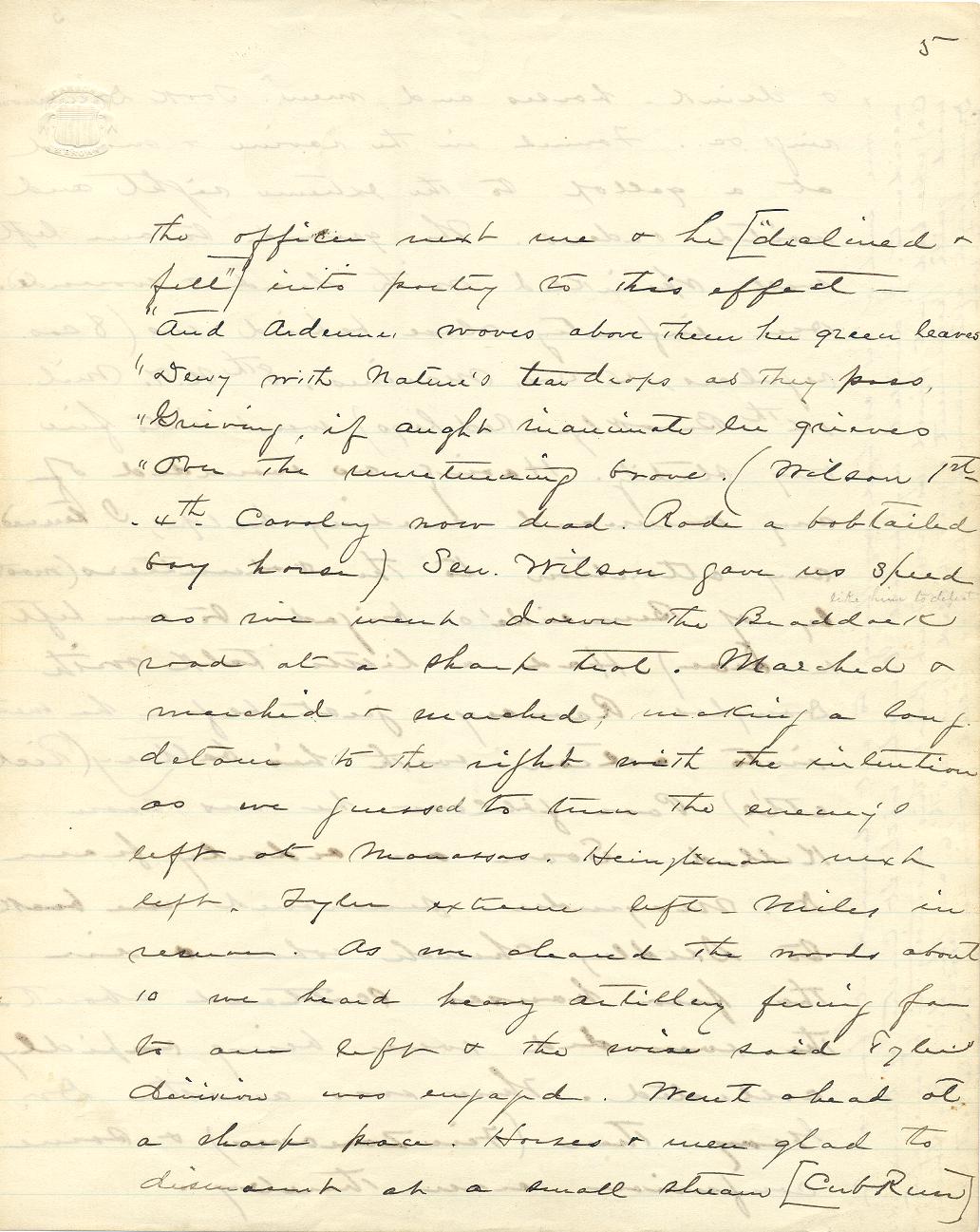
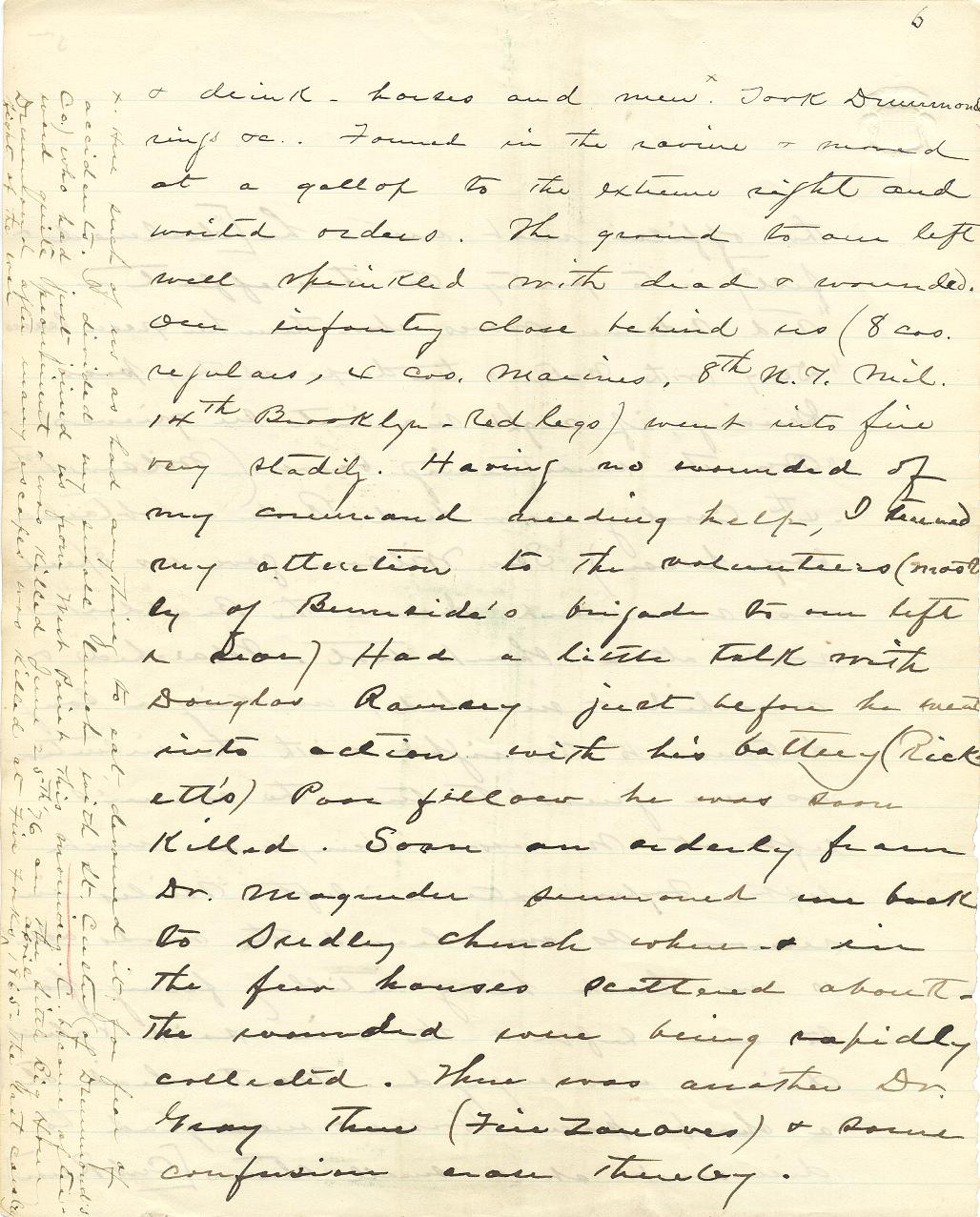
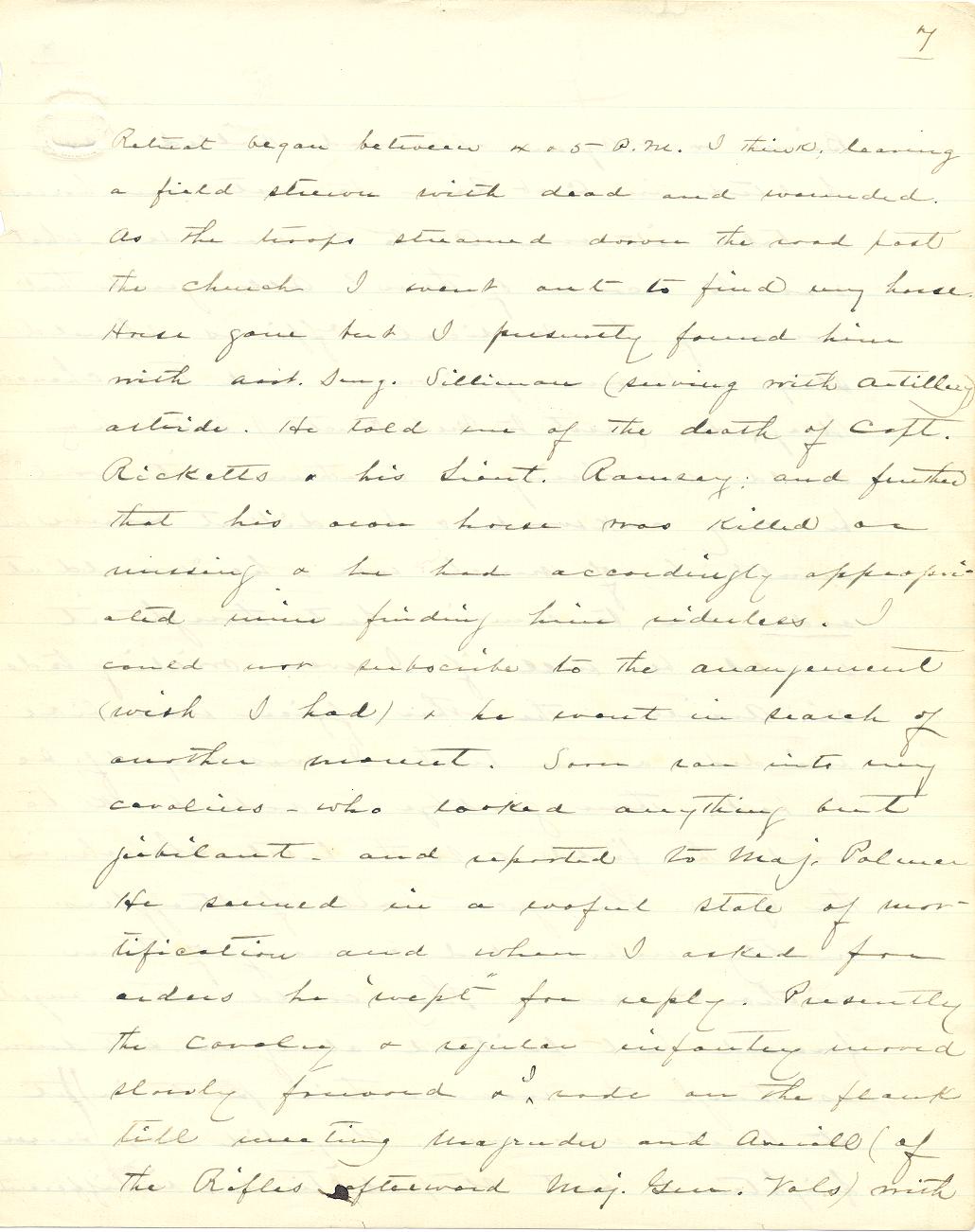
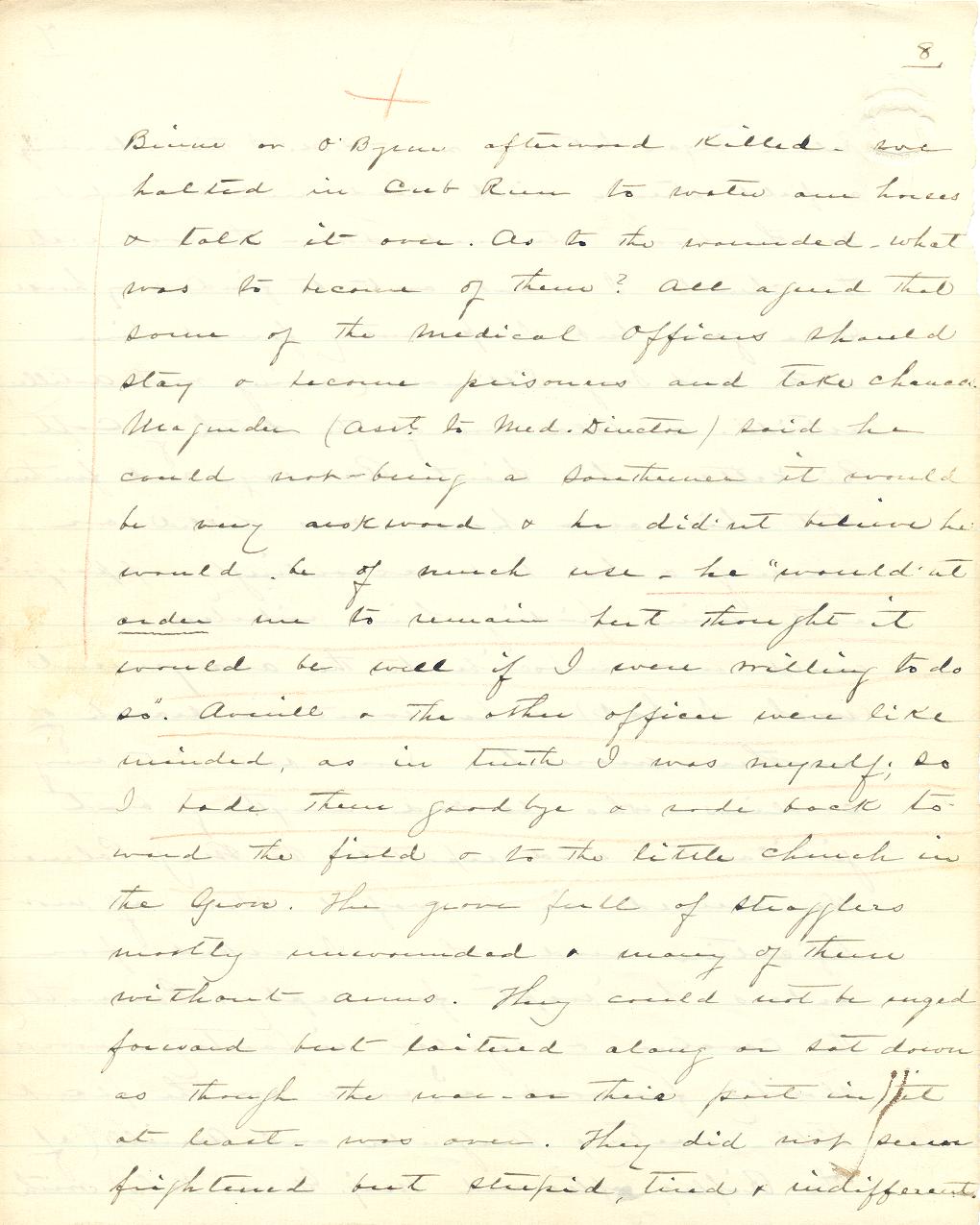

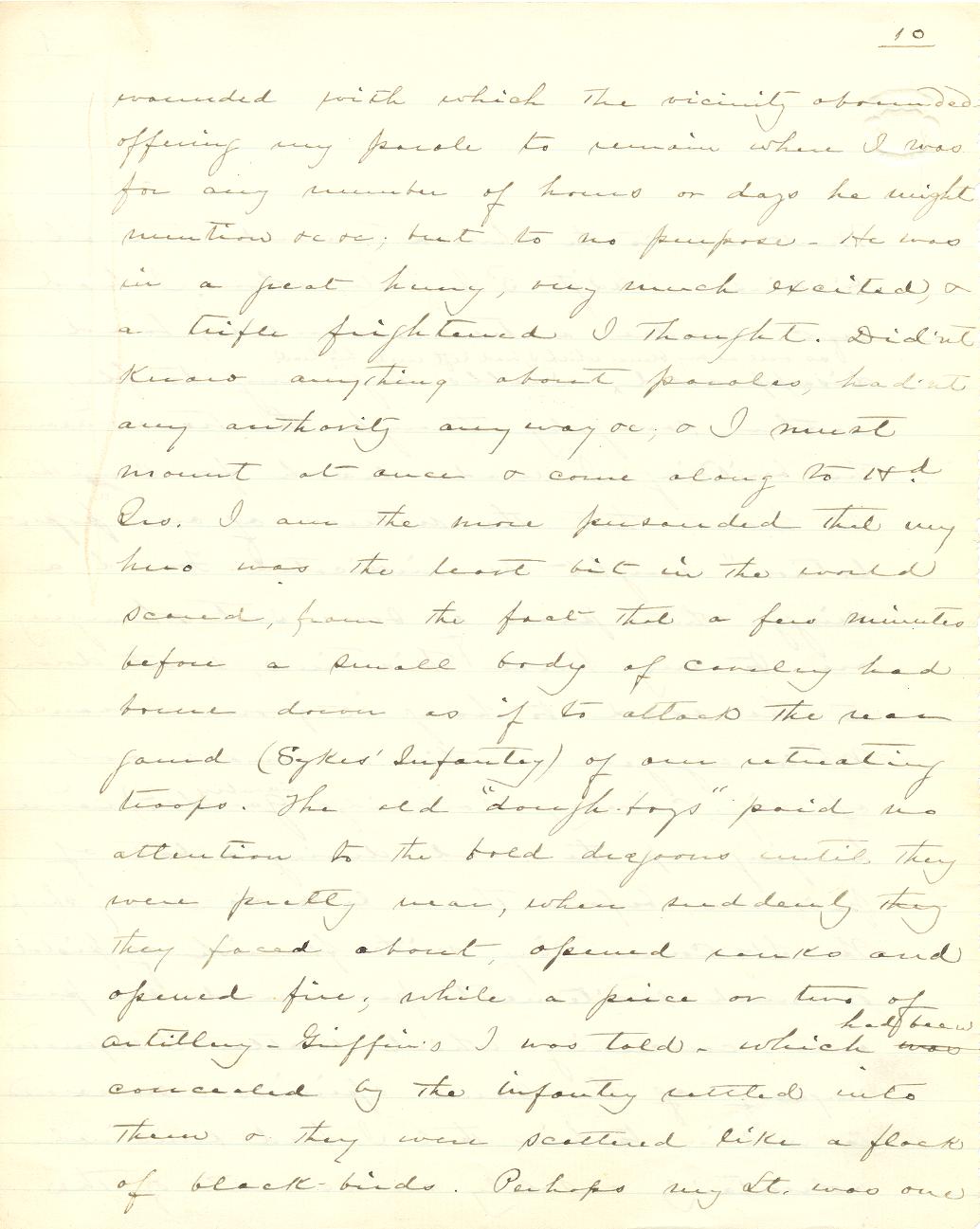
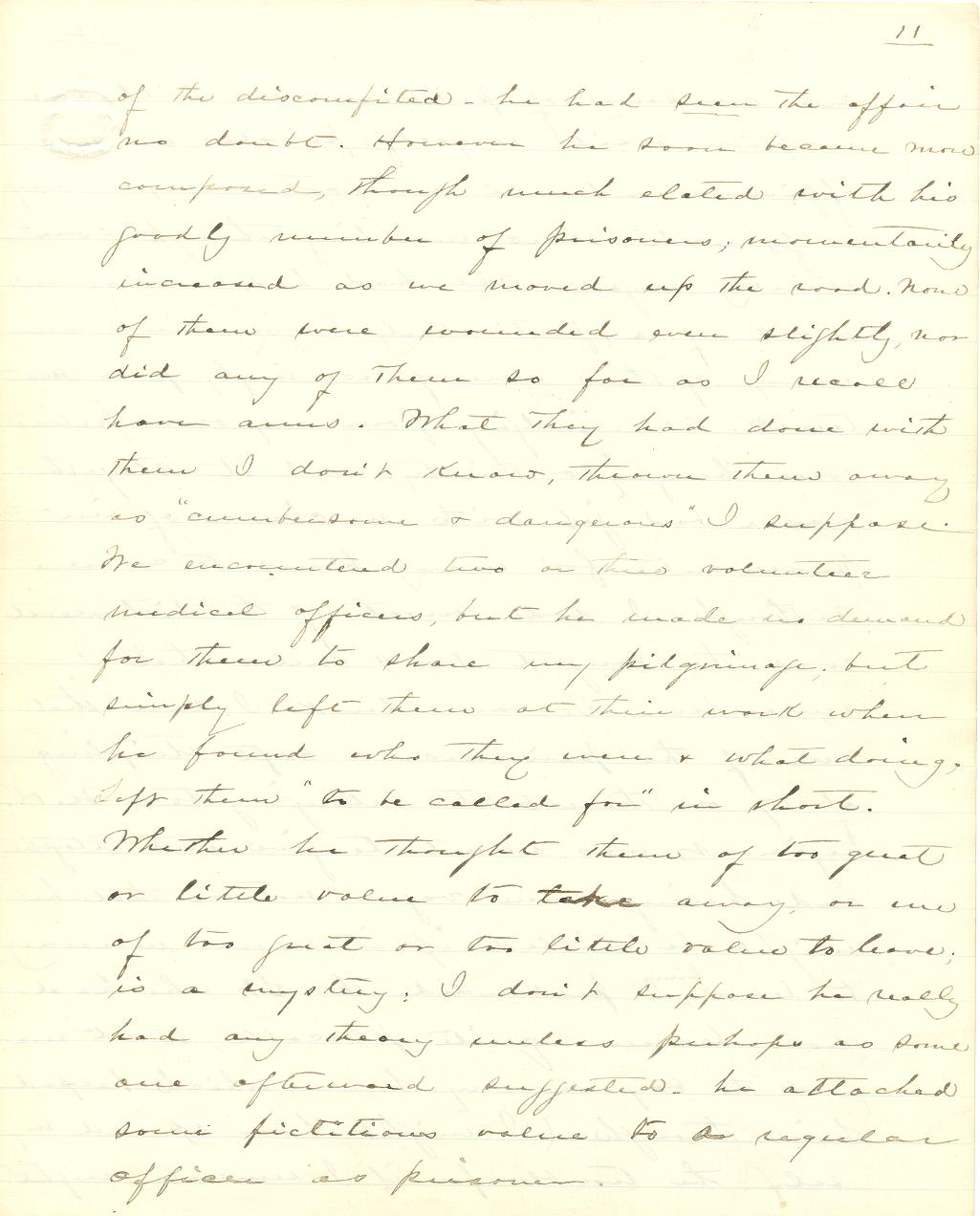
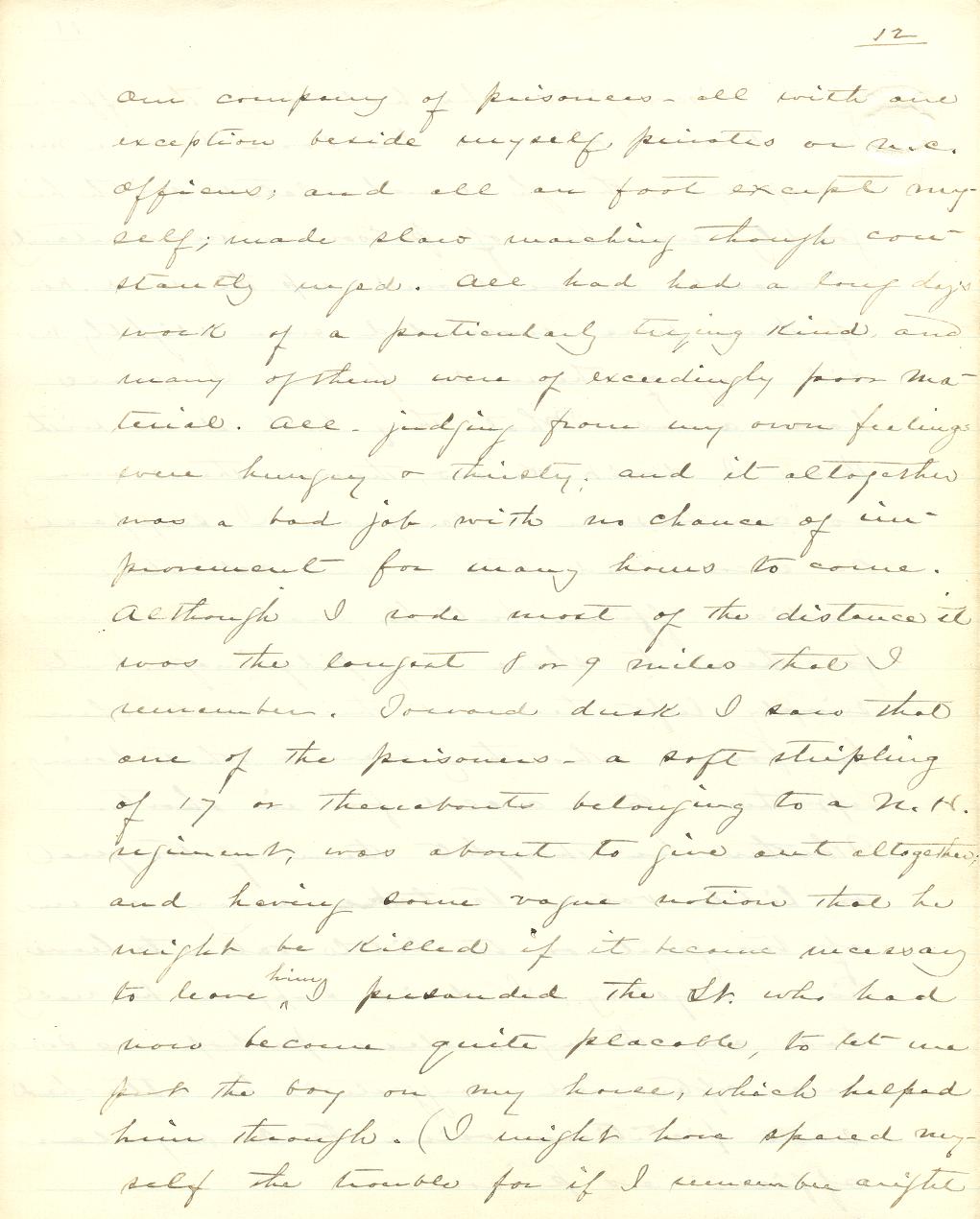
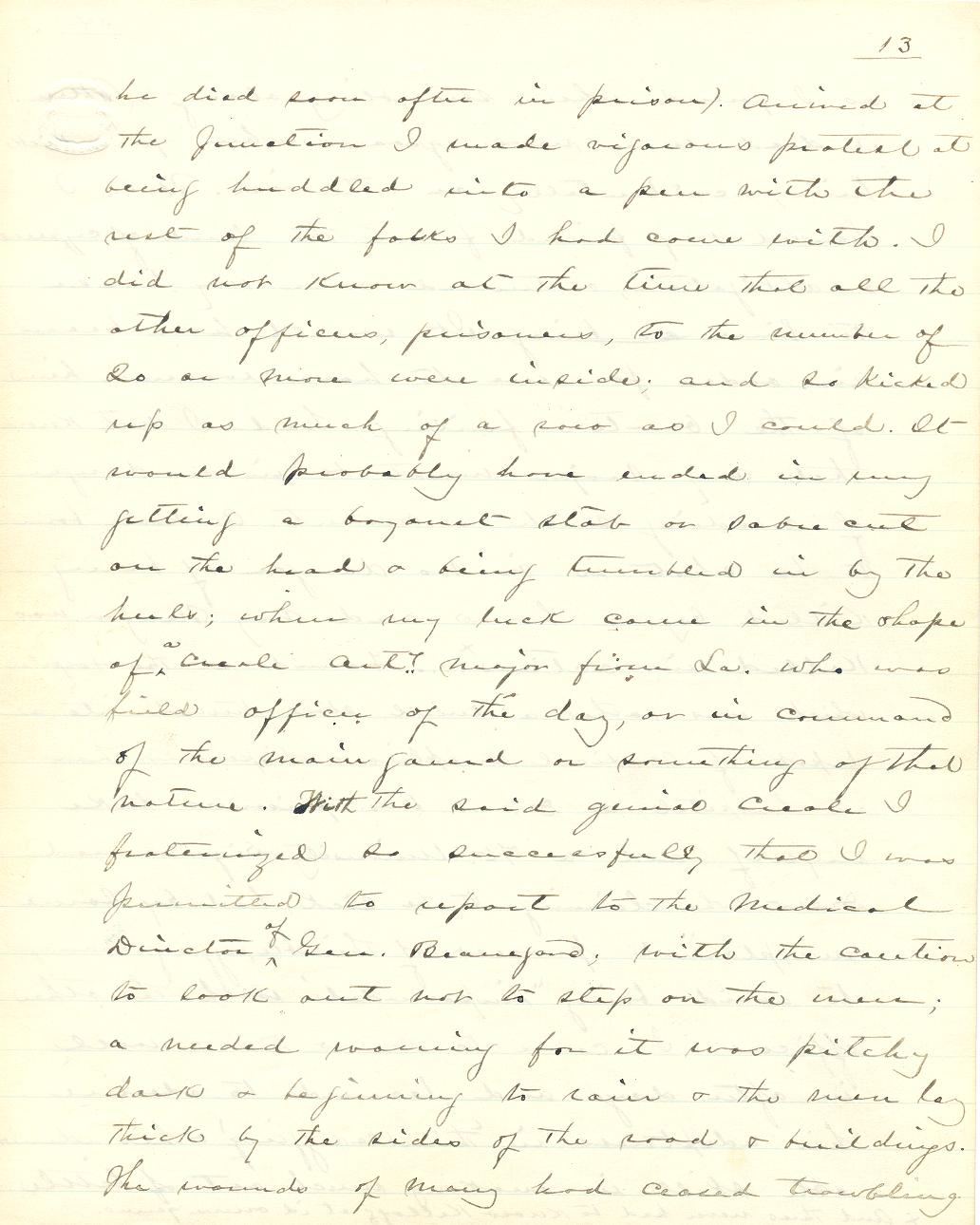
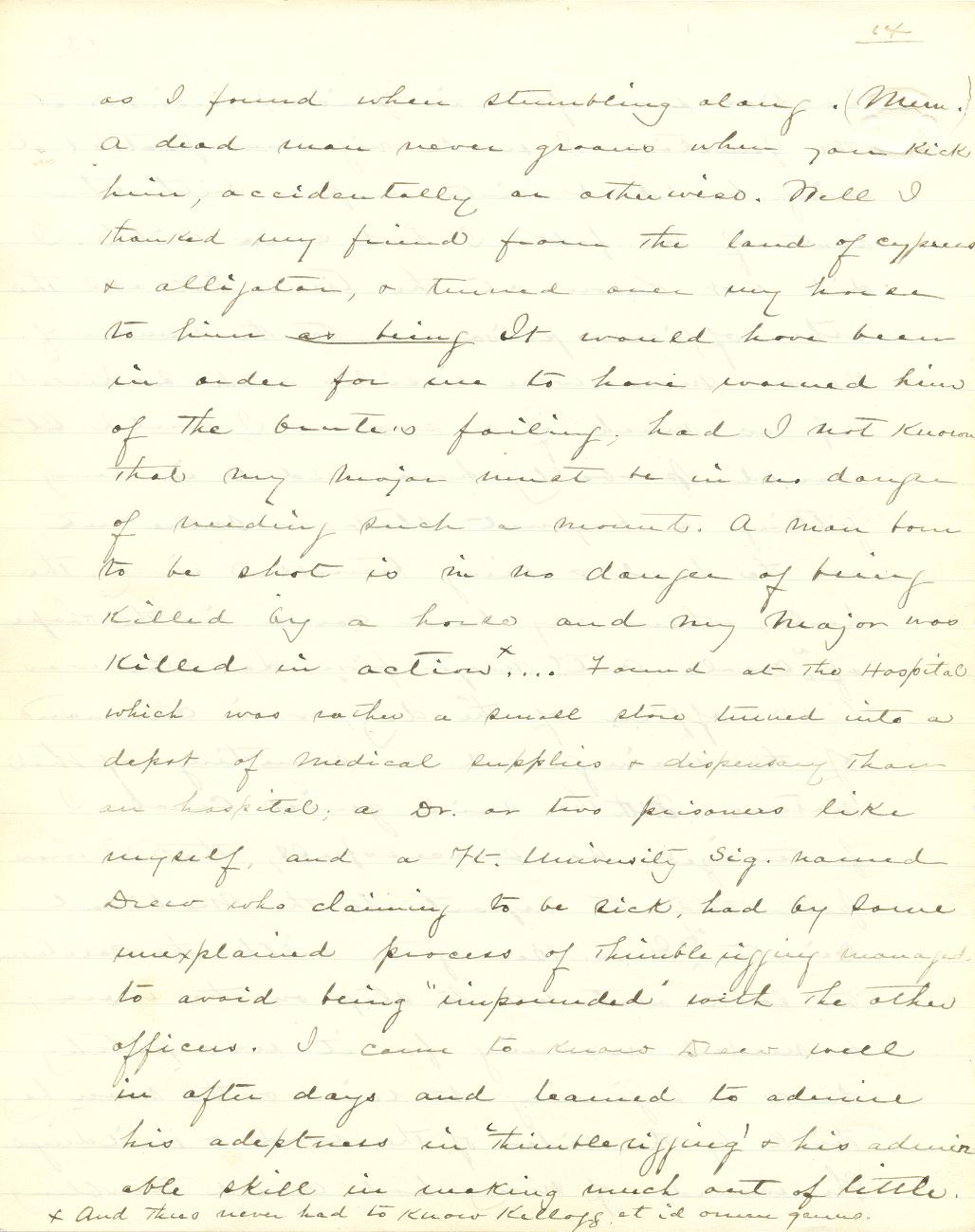
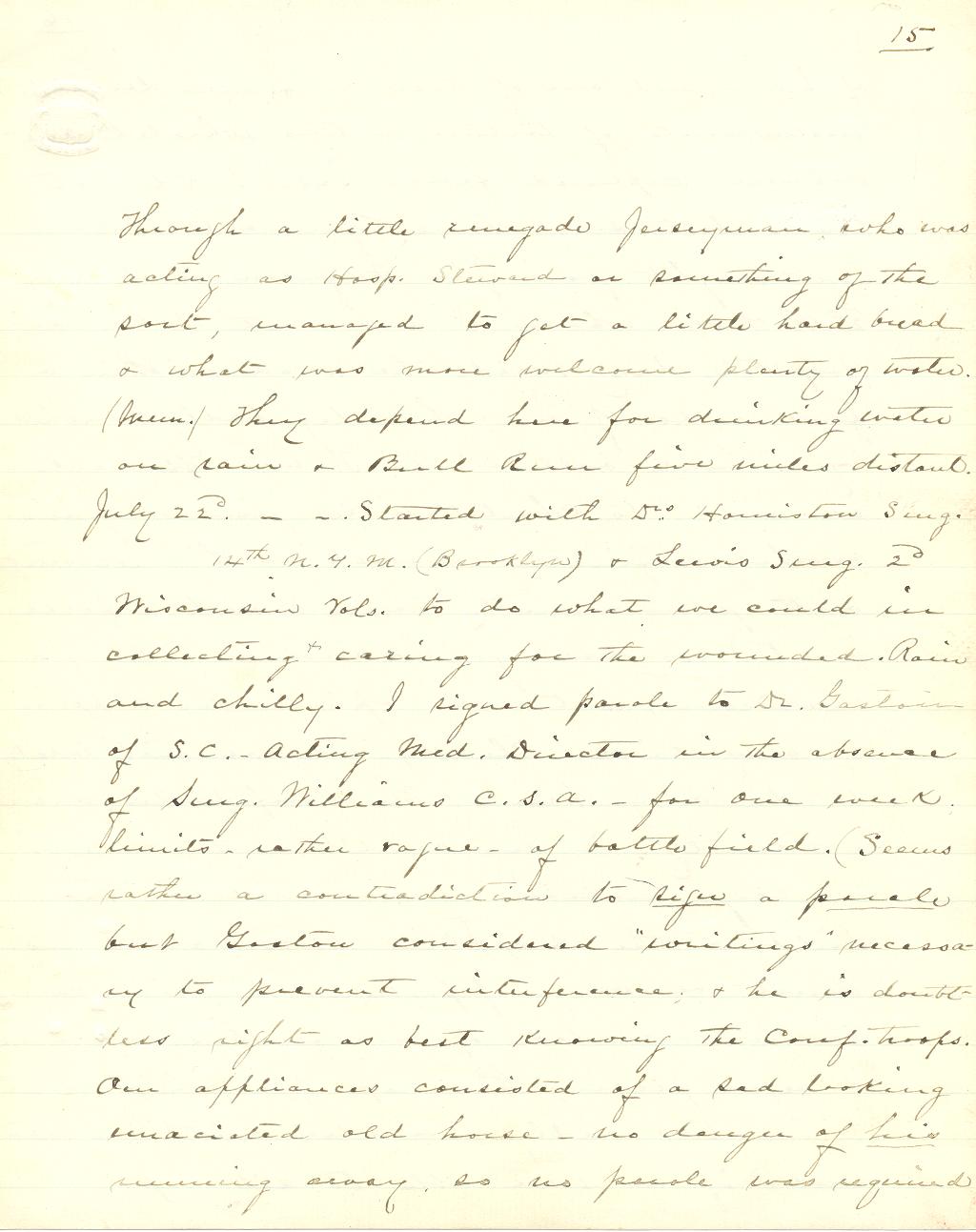

Interesting…I just found a photo of POW soldiers from Gray’s regiment while they were imprisoned at Castle Pinckney in Charleston. Can’t help but wonder if he is one of them. From what we know, Gray was imprisoned there. Check it out:
http://www.myrtle-avenue.com/firezou/pinckney.jpg
Matt,
Are you sure Gray was with the 11th NY? I have a listing for him in Heitman as a career Army surgeon from May 28, 1861 through January 10, 1879. And his narrative indicates he was with Porter’s brigade, as were the Regulars at Bull Run. At one poin he even said that having no wounded of his own command to treat, he attended to the volunteers. Does his diary, perhaps at the beginning or on the cover, more thoroughly identify his command?
OK, found a Charles Gray in 11th NY Inf, Surgeon. And also in 11th NY Cavalry, Surgeon. Both records on this site: http://www.itd.nps.gov/cwss/soldiers.cfm
Both are from the same microfilm rolls, which is suspicious. Something doesn’t seem right.
Sorry to be slow in responding, Harry. I’m happy to report that the Charles Carroll Gray diary has now been digitized in its entirety. You may view the diary by following these steps:
1. Visit the finding aid for the collection: http://www.lib.unc.edu/mss/inv/g/Gray,Charles_Carroll.html
2. Wait for the digital content to load. When a purple box appears at the top of the screen with the words, “Digitized Content,” click on, “go directly to all the digital content for this collection.” (or you may scroll until you find the links to the digital content).
3. Click on the hyperlinked text for “Folder 1” – this is volume 1 of the diary.
4. You’ll be taken to a new window with a list of the scans/pages for the volume. It takes some work, but you may view each page in succession, reading it page by page like the original.
5. If you have the image viewer plugin called “Cooliris” installed on your computer, you may view the scan images in a “3D wall” by clicking on the icon for “View in 3D” above each image. This makes it a little easier to read through all the pages online.
I notice that the collection contains a letter of 2 February 1904 from the Record and Pension Office of the War Department that states: “The official records show as follows: Charles Carroll Gray was appointed first lieutenant and assistant surgeon, U.S.A., May 28, 1861. He accepted the appointment May 31, 1861; was advanced to the grade of captain and assistant surgeon May 31, 1866; was appointed major and surgeon July 28, 1866; was retired from active service January 10, 1879, and died November 22, 1884.”
This confirms what you said about his being a career Army surgeon. I do not yet see anything in the rest of the narrative to help nail down his exact command. I’ll keep reading. You are right, the fact that there are two records on the same microfilm rolls does seem like something isn’t quite right. I’ll keep poking around a bit.
Thanks,
Biff Hollingsworth
Bill, if you read page one of the cover letter to the diary, you’ll see that it notes that Gray was in the 2nd US Cavalry, later the 5th US Cavalry. See here:
http://dc.lib.unc.edu/cdm4/item_viewer.php?CISOROOT=/ead&CISOPTR=80791&CISOBOX=1&REC=1
Thank you, Harry, for confirming this. I’ll change the description in our posts about Gray.
For sure he was not with the 11th NY, given this quote from the diary entry above:
Soon an orderly from Dr. Magruder summoned us back to Sudley Church where in the few houses scattered about the wounded were being rapidly collected. There was another Dr. Gray there (Fire Zouaves) & some confusion arose thereby.
Yeah, I’ll say some confusion arose!
The narrative itself is also consistent with Gray being with the regular cavalry during the battle.